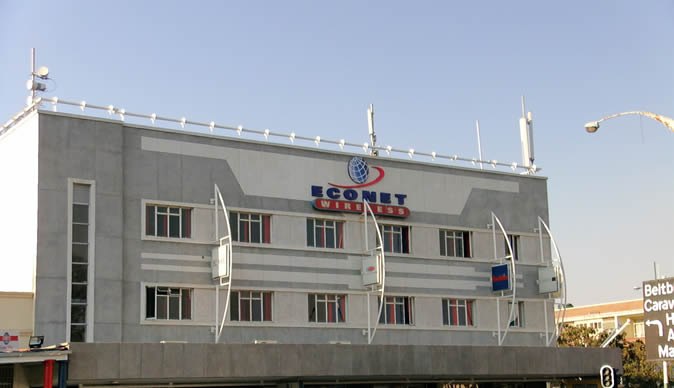PA status in Zimbabwe: Can it diverse portfolios or trap capital?
HARARE — The prescribed asset (“PA”) status has long been a coveted sweetener for issuers and at one point pivotal in determining success or failure in capital raises. Its rarity coupled with compliance gaps among pension funds made the otherwise simple tool by government meant to promote national development objectives soar in prominence, far beyond what was rational.
Things however came to a head on the back of clear guidelines by government on projects that would champion NDS1 and the subsequent conferment of the status to several projects amounting to US$390m for 2024. As the supply increased, the importance of the PA status waned prompting an about turn back to fundamentals.
Compliance must now be done on quality – return, risk, liquidity and diversification are back in fashion, rightly ranking higher than the hitherto coveted PA status. This note analyses diversification and return opportunities arising from the recently conferred prescribed assets from the perspective of a promoter seeking to attract the attention of, and those entrusted to superintend decisions of money managers.
As at the end of the year 2024, pension funds allocation to prescribed assets accounted for 12% of the US$2.26 billion pension funds’ assets under management. The industry thus requires to allocate a further US$180m towards prescribed assets to meet the minimum 20% allocation requirement. This is likely to be a multi-year exercise given that aggregate liquid asset of funds then amounted to $181m with US$60m being arrears and the same pot meeting the usual cash requirements of funds. Further, this target always moves as previous investments in assets with PA status mature. Of note is the skew of allocation to investment properties (47%) and quoted equities (20%) which jointly accounts for 67% of total assets. The balance of 21% is made up of debt instruments (4%), unquoted equities (4%), contribution arrears (3%) and other assets (9%).
First, we analyse diversification prospects. The age-old adage about not putting all your eggs in one basket is a key strategy that money managers use to manage risk. The idea is to spread investments across various sectors and assets within the sectors for the purposes of reducing their exposure to any one particular market or asset, potentially leading to more stable returns over time. This is desirable for pension funds if they are to have enough funds to meet the requirements of contributors at the time of their retirement.
The projects that have recently been conferred with PA status are in the Commercial real estate (49%), Residential Real Estate (21%), Agriculture (20%) Energy (9%) and Micro-lending (1%). This is the pool from which money managers can seek to improve the diversification of their portfolios.
While the make-up of each portfolio dictates which instruments can optimise risk and return, the benefits of having the above pool can still be discussed. Firstly, PA status is largely accorded to the debt segment of a project and subscribing to the above issues is likely to increase the contribution of fixed income inflows to pension funds, a welcome development given the skew to rental income and equity returns. Fixed rate inflows have the ability to reduce variability of returns over time.
Secondly, the current skew towards investment properties reflects huge investments in commercial real estate. The latest approvals include a huge presence of residential real estate which introduce new dynamics especially as regards liquidity and hence ability to meet payments when they are fall due. The quality of investments in this space can be considerably higher as revenue the source to service funding instruments is simple to understand and analyse.
Thirdly, the commercial real estate section features retail space in some interesting spaces far away from major towns and cities. Geographic spread is desirable as it add variety within an asset class and hence positive for diversification.
Lastly, the energy and microlending sectors clearly need to grow if they are to warrant separate mention. The approvals in this sector are positive for portfolios as they can only add to variety and hence diversification. The US$180m needed to meet the minimum threshold against US$390m worth of projects provides enough headroom for money managers to cherry pick what works best for their unique situation
With regards to earning prospects, money managers’ motivation is to attain investment returns that meet or exceed the fund’s obligations and member expectations. The design of each project will ultimately determine suitability for inclusion in a fund. Nonetheless, potential for generating returns are inextricably tied to growth prospects of each sector which warrants a discussion of investment themes driving the subject sectors. Focus here however will be on residential real estate and the energy sectors where there are intriguing developments and hence potential to generate abnormally huge returns in future.
Zimbabwe’s housing deficit is estimated at over 1 million units, with the country experiencing rapid urbanization. Opportunities abound across the value chain from developing residential stands to constructing turn-key projects. Pricing opportunities are huge especially with a quality product and the headroom to reduce construction costs with the help of new technologies is immense.
Pricing opportunities are huge especially with a quality product and the headroom to reduce construction costs with the help of new technologies is immense. Residential real estate projects naturally parcel out into smaller units requiring customers to make relatively smaller commitments as compared to commercial real estate. These dynamics makes them more liquid and hence enhances ability and willingness to pay obligations as they fall due. Pension funds are likely to be invested via debt instruments with PA status. There is room to either design or demand lucrative investments given the capacity to pay afford higher yields and shorter repayment periods.
Zimbabwe’s energy sector faces significant gaps, including a power supply deficit and slow progress toward universal electricity access. The country’s installed electricity generation capacity is approximately 2,600 MW, with actual generation averaging around 1,500 MW per year, falling short of the estimated demand of 4,000 MW. The mining sector, a significant contributor to GDP, is projected to require about 2,000 MW by end of 2025. The sector clearly presents opportunities for investment, particularly in the trendy renewable energy sources like solar which is underpinned by government setting a target of generating at least 2,100 MW of renewable energy capacity by 2030. Return prospects are promising, driven by growing demand from the mining and agricultural sectors, as well as access to regional energy markets through the Southern Africa Power Pool.
Zimbabwe’s energy policy allows ringfenced power projects with many projects in the pipeline that are coupled to thriving mines. Opportunities therefore exists to create valuable opportunities tied to quality clients which enhances the quality of instruments that fund the projects. These projects tend to have long term stable revenue streams with fairly low and predictable costs. This characteristic make renewable power projects suitable for pensions with opportunities to exploit pricing opportunities given the shortages.
It can therefore be said that the recent conferment of PA status to several projects in Zimbabwe offers opportunities for diversification and returns. While sector allocation may exacerbate concentration risk, the unique traits of the projects have potential to enhance portfolio diversification. Money managers can cherry-pick projects that work best for their portfolios, considering return prospects and growth potential in each sector. With careful selection and portfolio management, pension funds can benefit from the PA status conferment and contribute to Zimbabwe’s economic growth.
Further, opportunities to improve effectiveness of this tool exist. This round conferred the status to projects that more or less mirror existing books for pension funds. Infrastructure assets ranging from roads and bridges to border posts are missing on this list. Such assets
typically have operational lifespans of 15 to 30 years which makes it easier for pension funds to match long-term obligations with long-term assets, minimizing the risk of liquidity mismatches. There is need to encourage such projects to seek PA status and be among options that money managers look at.
Soft infrastructure around conferment of PA status can also be improved to improve transparency and robustness of the regulatory framework. Often projects fail due to political interference far removed from the design of the projects. Government bodies responsible for project selection and approval should operate independently while authorities ensure compliance, enforce contracts, and intervene swiftly when issues arise. PA status is invariably viewed as some form of endorsement of a project by authorities. The process of granting PA status must be based on thorough technical and financial evaluations notwithstanding that money managers are obligated to make their own due diligence.-finx









